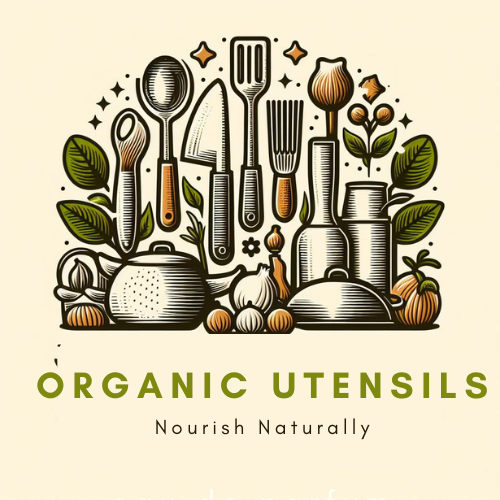How Fast Does Bamboo Grow?
The growth rate of bamboo varies significantly among different species, but some bamboo species can grow up to 91 centimeters (about 35 inches) per day under optimal conditions. This rapid growth can occur during the peak growing season, particularly in species such as Phyllostachys edulis (also known as Moso bamboo).
Here’s a simplified table based on what’s generally known about some bamboo species and their approximate growth rates. Remember that the bamboo growth rate can vary due to environmental conditions, soil quality, and care.
| Bamboo Species | Approximate Growth Rate per Day | Source |
| Phyllostachys edulis (Moso Bamboo) | Up to 91 cm (35 inches) | General knowledge based on botanical studies and horticultural records. |
| Bambusa oldhamii | Up to 30 cm (12 inches) | Based on horticultural guides and bamboo nursery information. |
| Phyllostachys bambusoides (Madake, Japanese Timber Bamboo) | Up to 40 cm (15 inches) | Derived from observations in botanical gardens and bamboo cultivation manuals. |
| Guadua angustifolia | Up to 20 cm (8 inches) | Information from research on neotropical bamboo and sustainable construction materials. |
| Dendrocalamus giganteus (Giant Bamboo) | Up to 30 cm (12 inches) | Based on records from tropical bamboo plantations and growth studies. |
Notes:
- Phyllostachys edulis (Moso Bamboo): This species is known for being one of the fastest and tallest-growing bamboo species. It is used extensively in Asia for its wood and shoots.
- Bambusa oldhamii: This popular ornamental bamboo grows quickly and is often used for privacy screens and hedges.
- Phyllostachys bambusoides: Prized for its strong wood, it is commonly used in construction and crafts in Japan.
- Guadua angustifolia: This is an essential structural bamboo in South America. It is known for its strength and is used in construction.
- Dendrocalamus giganteus: As the name suggests, it’s one of the largest bamboo species, grown for its impressive size and biomass.
Steps involved in the growth of bamboo
The growth of bamboo, a fast-growing plant that belongs to the grass family, involves several natural processes that enable it to thrive without human intervention. Here, I have discussed a simplified overview of the steps involved in the growth of bamboo:
1. Germination
Seed Dispersal and Germination: Bamboo flowering is rare and follows a long cycle, ranging from a few years to over a century, depending on the species. After flowering, bamboo produces seeds dispersed by wind or animals. When conditions are right—adequate moisture, temperature, and soil—these seeds germinate to produce new bamboo plants.
2. Sprouting
Sprouting from Rhizomes: Most bamboo growth occurs by sprouting new culms (stems) from an underground root system called rhizomes. These rhizomes spread horizontally in the soil and can produce new shoots without additional seeding.
3. Rapid Growth
Rapid Vertical Growth: Once a new shoot emerges from the ground, it grows at an astonishing rate, with some bamboo species are capable of growing up to 91 cm (35 inches) daily. This rapid growth occurs due to bamboo’s unique structure, where the stem segments are already formed inside the rhizome. The growth is mainly due to elongation, without significant diameter increase after emergence.
4. Photosynthesis and Maturation
Leaf Development and Photosynthesis: As the bamboo stem grows, leaves develop that facilitate photosynthesis, enabling the plant to produce the essential food necessary for its growth. This process also contributes to bamboo’s rapid growth rate.
Maturation: After reaching its full height, the bamboo culm matures and hardens over the next few years. The walls of the bamboo segments thicken, providing strength and durability.
5. Spreading
Rhizome Expansion: The rhizome system continues to expand underground, allowing the bamboo to spread and colonize new areas. This vegetative reproduction method is the primary means by which bamboo spreads, as flowering and seed production are infrequent.
6. Flowering and Seed Production
Flowering: Eventually, often after many years, the bamboo will flower, which is a phenomenon that occurs almost simultaneously across bamboo of the same species, regardless of geographical location. This mass flowering can lead to the death of the parent plant in some species, after which seeds are produced, and the cycle begins anew.
Bamboo growth cycle:
| Step | Description | Growth Rate / Time |
| Germination | Seed Dispersal and Germination: Bamboo flowering is rare and follows a long cycle. After flowering, seeds are dispersed by wind or animals. Under the right conditions, these seeds germinate to produce new bamboo plants. | It varies widely; it can take weeks for germination. |
| Sprouting | Sprouting from Rhizomes: Bamboo growth mainly occurs through new culms sprouting from rhizomes, which spread horizontally in the soil. | Varies; new shoots sprout during growing seasons. |
| Rapid Growth | Rapid Vertical Growth: Due to the preformed structure of bamboo stems in the rhizome, new shoots grow rapidly, up to 91 cm (35 inches) daily. | Grows up to 91 cm (35 inches) a day during peak growth. |
| Photosynthesis and Maturation | Leaf Development and Photosynthesis: Leaves develop, facilitating photosynthesis and contributing to rapid growth. Maturation occurs as the bamboo culm hardens over the years. | Maturation takes several years after reaching full height. |
| Spreading | Rhizome Expansion: The underground rhizome system expands, allowing bamboo to spread and colonize new areas. | Continuous as the rhizome system expands. |
| Flowering and Seed Production | Flowering: After many years, bamboo flowers across the same species simultaneously, potentially leading to the parent plant’s death. This is followed by seed production, restarting the cycle. | The flowering cycle ranges from a few years to over a century. |
Uses of Bamboo in real life
Bamboo, with its remarkable strength, flexibility, and sustainability, is vital in various industries and everyday life worldwide. Its uses span traditional practices to modern innovations. Here are some of the primary uses of bamboo in real life:
1. Construction and Architecture
Structural Material: Bamboo is used for building houses, especially in earthquake-prone areas, due to its flexibility and strength.
Scaffolding: It’s widely used as scaffolding material in construction projects, particularly in Asia.
Flooring and Furniture: Bamboo is processed into planks for flooring and furniture, offering durability and aesthetic appeal.
2. Textiles and Clothing
Fabric Production: Bamboo fibers are used to make textiles for clothing, towels, and bed linens. Bamboo fabric is known for its softness and antibacterial properties.
3. Paper and Writing Materials
Paper Products: Bamboo pulp is an alternative raw material for paper production, reducing reliance on traditional wood pulp.
4. Utensils and Kitchenware
Cooking Tools: Bamboo makes various kitchen tools, including cutting boards, utensils, and steamer baskets.
Disposable Items: Ecofriendly disposable items like plates, cutlery, and straws are bamboo-made.
5. Gardening and Landscaping
Support Stakes: Bamboo stakes support plants in gardens.
Decorative Elements: Landscaping uses bamboo for fencing, water features, and ornamental plants.
6. Musical Instruments
Traditional Instruments: Various cultures use bamboo to create musical instruments, including flutes, xylophones, and didgeridoos.
7. Food
Edible Shoots: Bamboo shoots are a nutritious food source in many Asian dishes.
8. Environmental Protection
Soil Erosion Control: Bamboo’s root systems can help prevent soil erosion.
Carbon Sequestration: It absorbs carbon dioxide and produces a significant amount of oxygen, contributing positively to environmental health.
9. Medicine
Traditional Remedies: Some cultures use bamboo in traditional medicine to treat various ailments.
10. Crafts and Art
Artistic Medium: Bamboo is used in arts and crafts and for making items like pens, mats, and baskets.
11. Sports and Recreation
Equipment: Bamboo is used to make bicycles and skateboards and even as a material for ski and snowboard cores due to its strength and flexibility.
12. Sustainable Energy
Biofuel: Bamboo can be processed into biochar and used as a renewable energy source.
13. Technology
Electronic Accessories: Cases and stands for phones and tablets are made from bamboo, appealing to eco-conscious consumers.
Bamboo’s versatility and sustainable growth cycle make it an invaluable resource across numerous fields. It offers both traditional and innovative solutions to modern challenges.
How to grow bamboo
Each bamboo species has its preferred climate, sunlight, and soil conditions, so choosing a species that matches your local conditions is crucial. With the right preparation and care, including proper planting, watering, fertilizing, and pruning, you can enjoy the beauty and benefits of bamboo for years to come.
| Step | Instructions |
| Choose the Right Type of Bamboo | Decide between clumping (non-invasive) and running (invasive) bamboo. Select a species that thrives in your climate zone. |
| Select the Planting Site | Most bamboos prefer full sun and well-draining soil. Some species can tolerate partial shade. |
| Prepare the Soil | Amend soil with compost to improve fertility and drainage if needed. |
| Planting Bamboo | Plant in the spring or fall. Dig a hole twice as wide and deep as the root ball. Fill in with soil, ensuring the bamboo is at the same depth it was in the container. |
| Watering and Mulching | Keep soil consistently moist, especially in the first two years. To protect the soil and improve your plants’ health, applying a thick layer of mulch around their base is recommended. |
| Fertilizing | Use a balanced fertilizer or one high in nitrogen during the growing season. |
| Pruning and Maintenance | Install a rhizome barrier or grow in containers to control spread for running types. Trim away dead or undesired culms and thin the clump as needed. |
| Overwintering | In colder climates, protect your bamboo from freezing temperatures with heavy mulching or wrapping culms in burlap. |
| Monitoring for Pests and Diseases | While bamboo is relatively pest—and disease-resistant, look for signs of trouble and address any issues regularly. |
| Repotting (for Container-Grown Bamboo) | Choose a large container to accommodate growth and ensure good drainage. Repot every few years to refresh the soil and provide more room for growth. |
Growing Bamboo in Pots and containers
Planting bamboo in pots and containers is a great way to enjoy this versatile plant without worrying about it spreading uncontrollably, which is a common concern with some bamboo species. Container planting can also be ideal for decorative purposes, indoor settings, or limited spaces. Here’s how to plant and care for bamboo in pots:
What type of bamboo species to grow in pots and containers: Clumpers vs. Runners
Bamboo species are broadly classified into two categories: clumpers and runners. Clumpers grow in tight clusters, expanding slowly and predictably, making them less invasive and easier to manage. Runners spread aggressively through underground rhizomes, often emerging far from the parent plant and potentially invading garden spaces or neighboring properties.
However, not all bamboo species are suited for container living. It’s generally best to stick with clumping varieties when choosing bamboo for pots, as they grow more slowly and are less likely to become root-bound quickly. Here are some bamboo species that are known to perform well in pots and containers:
1. Fargesia Species (Clumping Bamboo)
- Fargesia murielae (Umbrella Bamboo): This plant has a dense, bushy appearance and is cold-hardy, making it ideal for temperate climates.
- Fargesia rufa (Dragon Head Bamboo): Known for its lush, green foliage and adaptability to various light conditions.
2. Bambusa Species (Tropical and Subtropical Clumping Bamboo)
- Bambusa multiplex (Hedge Bamboo): Suitable for warmer climates and offers a range of varieties with different leaf sizes and cane colors.
- Bambusa ventricosa (Buddha Belly Bamboo): Characterized by its bulging “belly” internodes, it does well in containers where its size can be more easily controlled.
3. Chimonobambusa Species (Temperate Clumping Bamboo)
- Chimonobambusa tumidissinoda (Walking Stick Bamboo): Noted for its unusual, swollen nodes, this species adds an exotic touch to container plantings.
4. Thamnocalamus Species (Mountain Bamboo)
- Thamnocalamus crassinodus (Thick-node Mountain Bamboo): This bamboo is ideal for cooler climates and offers a more compact size suitable for pots.
5. Pleioblastus Species (Dwarf Bamboo)
- Pleioblastus shibuyanus ‘Tsuboi’: A variegated dwarf bamboo that is excellent for small containers and adds a striking visual element to patios and indoor settings.
Tips for Growing Bamboo in Containers
- Container Size: Choose a container that can accommodate the bamboo’s root ball with room to grow. Larger containers will need less frequent repotting.
- Soil: “To avoid root rot, it is important to use a well-draining soil.” pot mix. A mix designed for woody plants or trees can also work well for bamboo.
- Watering: Bamboo in containers will dry out more quickly than in the ground. Ensure consistent moisture without waterlogging the pot.
- Fertilization: Apply a balanced, slow-release fertilizer to support healthy bamboo growth during the growing season.
- Repotting: Monitor the bamboo’s growth and repot into a larger container every few years to prevent it from becoming root-bound.
Selecting a Container
- Choose a large, sturdy container with adequate drainage holes. Bamboo roots are strong and can crack weak pots.
- The container size should accommodate the bamboo root ball with extra space for growth.
Planting the Bamboo
- Potting Mix: A well-draining mix promotes healthy root growth. To nourish the bamboo, you can add a slow-release fertilizer.
- Planting: Remove the bamboo from its nursery pot and gently remove the roots if they circle the root ball. Place the plant in the pot, ensuring it’s at the same depth as the nursery pot. Fill in the mix around the plant and water thoroughly.
Care and Maintenance
- Watering: Bamboo in containers requires more frequent watering than in-ground plants. Keep the soil in the pot moist but not soggy.
- Fertilizing: During the growing season, feed your potted bamboo with a slow-release fertilizer to support rapid growth.
- Sunlight: Most bamboo species prefer a sunny to partially shaded location. However, some species may tolerate less light, making them suitable for indoor environments.
- Pruning: Regularly prune dead or overgrown stems to maintain the plant’s appearance and health.
- Repotting: Depending on the growth rate, you may need to re-pot your bamboo every few years. If the plant becomes root-bound or the soil degrades, it’s time to repot into a larger container or refresh the soil.
Overwintering
- If you live in a region with cold winters, consider moving your potted bamboo indoors or to a sheltered area to protect it from freezing temperatures.
Common Issues
- Yellow Leaves: a sign of over-watering or under-watering, nutrient deficiency, or too much direct sunlight.
- Pests and Diseases: Bamboo is generally resistant, but look for signs of pests or diseases and treat them as necessary.
Planting bamboo in pots allows you to control its growth and enjoy its beauty in various settings. With the proper care, your potted bamboo can bring a touch of elegance to your home or garden.
Top of Form
How to control bamboo growth
Controlling bamboo, especially running types, requires a combination of strategies focused on prevention, containment, and eradication.
1. Choose Wisely
Opting for clumping bamboo species can significantly reduce the risk of uncontrolled spread. These species are well-suited for smaller gardens or where minimal maintenance is desired.
2. Containment is Key
For those who choose running bamboo, implementing containment measures is crucial:
- Physical Barriers: Installing a vertical rhizome barrier around the planting area can effectively limit bamboo spread. A 30-40 mil thick plastic barrier, buried 22-30 inches deep, offers a durable solution. Ensure the installation follows guidelines, such as those from The American Bamboo Society, to avoid common pitfalls.
- Containers: Planting bamboo in large containers can also prevent unwanted spread, offering an ideal solution for patios or deck gardens.
3. Vigilant Maintenance
Regular maintenance can prevent running bamboo from becoming a nuisance:
- Shoot Management: During the brief annual growth period, promptly remove any unwanted shoots to prevent them from establishing.
- Mowing: If bamboo sprouts in lawn areas, frequent mowing during the spring shooting season can keep it in check.
4. Eradication Efforts
Eradicating running bamboo involves persistent effort:
- Manual Removal: Digging up the rhizomes and regularly removing new shoots can eventually deplete the bamboo’s energy reserves.
- Chemical Control: While not always effective, certain herbicides like glyphosate can be applied directly to the leaves. However, caution and repeated applications are necessary for success.
Bamboo Growth Across Different Climatic Conditions
Top of Form
| Climate Type | Characteristics | Bamboo Types | Growth |
| Tropical | High temperatures year-round with abundant rainfall. | Bambusa, Dendrocalamus, Gigantochloa | Exceptionally fast and large, ideal for timber and ornamental use. |
| Subtropical | Hot, humid summers and mild winters with moderate rainfall. | Phyllostachys, Fargesia, Bambusa | Year-round growth with slight dormancy in cooler months. |
| Temperate | Distinct seasons with a wide temperature range between summer and winter. | Phyllostachys nuda, Fargesia murielae | Seasonal growth, mostly in spring and early summer. |
| Mediterranean | Hot, dry summers and cool, wet winters. | Drought-tolerant Bambusa and Phyllostachys | Seasonal growth peaks in spring and fall. |
| Mountainous/High-Altitude | Cooler overall temperatures with the potential for significant snowfall. | Mountain bamboo, like Fargesia species | Slower, more compact growth, adapted to survive under snow. |
Bamboo growth rate and Lifespan of Bamboo
| Aspect | Description |
| Initial Growth | Some species can grow up to 35 inches (91 cm) daily during peak periods. Fast growth occurs within the first few months. |
| Maturity | Bamboo reaches maturity within 3 to 5 years, after which height and diameter growth stops. |
| Culm Lifespan | Individual culms usually live for 5 to 10 years, depending on species and conditions. |
| Clonal Lifespan | The bamboo plant can live for decades or even over a century, continuously producing new shoots. |
| Flowering Cycle | Flowering occurs infrequently, ranging from every few years to over a century, often followed by the plant’s death. |
Uses of Bamboo in Agriculture
| Use in Agriculture | Description |
| Soil Erosion Control | Bamboo’s root system binds soil, preventing erosion, especially in hilly areas. |
| Organic Farming | They are used to create organic compost and mulch, enriching the soil with nutrients. |
| Agroforestry and Mixed Cropping | Enhances biodiversity, provides shade, and benefits other crops in mixed systems. |
| Livestock Fodder | Provides nutritious fodder for livestock from leaves and young shoots. |
| Irrigation | Helps manage water flow in irrigation, aiding water conservation. |
| Windbreaks and Shelterbelts | Serves as windbreaks, protecting crops and creating favorable microclimates. |
| Sustainable Material | Used for agricultural tools, fencing, trellises, and greenhouses, reducing reliance on timber. |
| Income Generation | Cultivation can be a direct source of income through the sale of bamboo products. |
| Carbon Sequestration | Bamboo forests act as carbon sinks, contributing to carbon sequestration efforts. |
| Biodiversity Conservation | Supports diverse wildlife, contributing to biodiversity conservation. |
| Bioenergy | Processed into biochar, pellets, and biofuels, providing renewable energy sources. |
How tall Does Bamboo Grow
The height that bamboo can grow to varies widely among species, ranging from small ornamental plants to towering giants. Here’s a general overview:
| Bamboo Size | Height Range | Examples & Uses | Time to Reach Full Height |
| Miniature | A few inches | Perfect for indoor cultivation or small gardens. | Varies; some species reach full height in a single growing season. |
| Medium | 10 to 20 feet (3 to 6 meters) | Often used for privacy screens and hedges in residential gardens. | Several years to reach full height, depending on species and conditions. |
| Tall | 40 to 100+ feet (12 to 30+ meters) | Includes species like Dendrocalamus giganteus, used for towering natural barriers. | Up to 5 years for the fastest growth, with some species continuing to grow taller over many years. |



